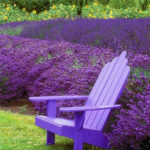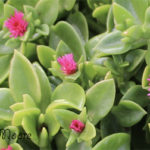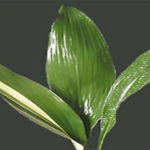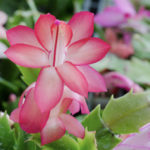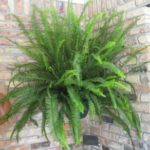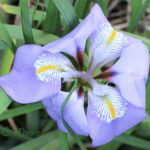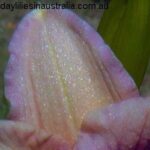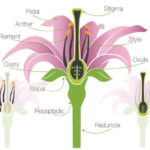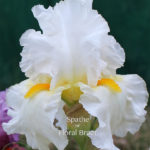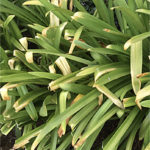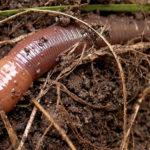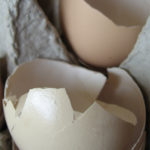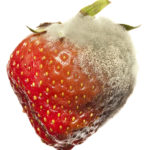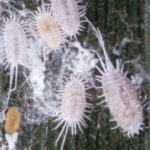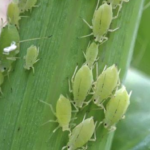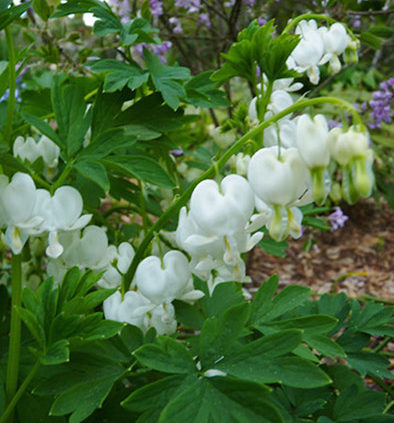
Bleeding Heart Plant Care
Bleeding Heart – How to Grow Bleeding Heart Flower Plants
 Bleeding Heart plant Dicentra Spectabilis has attractive blue green foliage followed by unique heart shaped flowers that hang down from the end of delicate arching bare stems in spring. The flower colours of the bleeding hearts include red, purple, pink and white, solid white, and a rare variety is known as Gold Heart displaying dramatic golden yellow foliage against pink flowers. The bleeding heart grows from a height of 6 inches to 2 feet tall depending on the variety you intend to buy to grow in your garden. This plant is native to the woodlands of Canada and the United States. These shade loving plants stay in bloom for serval weeks but will not tolerate the sun unless you live in a very cool climate. They are herbaceous perennials that form a clump with attractive heart shaped flowers on the ends of the fine branches. Some varieties can repeat bloom in the summer especially if you live in a cool climate. Normally Dicentra species only blooms once per year from late spring through to early summer. Propagation of the plant is mainly through the division of the rhizome, although the flowers do produce seeds. The plants may die back after flowering and remain dormant through winter till the next spring when the bleeding heart again breaks dormancy to continue on with its growth cycle. Dicentras are well suited for shady areas of the garden and for woodland areas. They can be grown happily along with Ferns, Hostas, and Primulas. All parts of the plant are poisonous and can cause skin irritation and a rash.
Bleeding Heart plant Dicentra Spectabilis has attractive blue green foliage followed by unique heart shaped flowers that hang down from the end of delicate arching bare stems in spring. The flower colours of the bleeding hearts include red, purple, pink and white, solid white, and a rare variety is known as Gold Heart displaying dramatic golden yellow foliage against pink flowers. The bleeding heart grows from a height of 6 inches to 2 feet tall depending on the variety you intend to buy to grow in your garden. This plant is native to the woodlands of Canada and the United States. These shade loving plants stay in bloom for serval weeks but will not tolerate the sun unless you live in a very cool climate. They are herbaceous perennials that form a clump with attractive heart shaped flowers on the ends of the fine branches. Some varieties can repeat bloom in the summer especially if you live in a cool climate. Normally Dicentra species only blooms once per year from late spring through to early summer. Propagation of the plant is mainly through the division of the rhizome, although the flowers do produce seeds. The plants may die back after flowering and remain dormant through winter till the next spring when the bleeding heart again breaks dormancy to continue on with its growth cycle. Dicentras are well suited for shady areas of the garden and for woodland areas. They can be grown happily along with Ferns, Hostas, and Primulas. All parts of the plant are poisonous and can cause skin irritation and a rash.
Growing conditions
Care for bleeding heart plants involves keeping the soil moist and using humus rich soil that is well drained. They prefer partial to full shade in warm areas and in cooler climates can tolerate full sun. They prefer alkaline soil and provide compost or humus at planting time. This plant can be transplanted during late autumn and winter. During the growing season, it is best to water and mulch the plants thoroughly to ensure proper growth.
How to Grow Bleeding Hearts?
Before planting the Dicentra plant in spring or autumn, prepare the planting area by adding compost to create rich organic soil. Select a shady or partly shaded area to grow bleeding hearts in your garden. The compost or organic mulch added while planting will break down during the growth period and will supply the plant with essential nutrients. It is important to keep the soil moist with regular watering. Bleeding heart plants are not heavy feeders but do like rich fertile soil.
Pruning Bleeding Heart Plants after the first heavy frost cut back the plants, leaving just 1-2 inches of growth above the soil level. Do not remove the foliage until it turns completely yellow or brown. During this time, the plant is storing the food for the next growing season. It is necessary to fertilise the plants regularly. Adding compost and fertiliser when the foliage first comes out in spring will ensure long lasting blooms later on.
Propagate Bleeding Hearts by dividing the clumps once in every two to three years. You need to carefully dig up the roots and divide the rhizomes. Make sure that each rhizome has at least two eyes. Plant the divided rhizome just below the soil in a new location to have attractive blooms in spring. Plant the rhizome at least 2 feet apart. Transplanting can be done during winter or in late autumn. It is quite normal for the bleeding heart plant to take one or two seasons for the plant to establish itself and to start producing flowers. Bleeding heart plants are very sensitive to heavy soils and boggy conditions and this can prevent the plant from flowering.
Bleeding Heart Seeds need to be sown fresh, you can scatter the seeds in the garden in late autumn. Bleeding hearts are known to self seed as well. The bleeding heart seeds will germinate when the weather and ground warms up in the spring.
Pests- if bleeding hearts are cared for properly this will prevent lots of diseases and pests on these plants. They are generally free from the attack of diseases and bugs. The most common pests are aphids. If leaf spot appears, cut the leaf spot leaves off and dispose of them in the bin. If the plant gets fusarium wilt it is a fungus that lives in the soil. It is best to destroy the plant by burning it, don’t put the diseased plant in your compost and dig around to get rid of the diseased soil as well.
 Taking Cuttings From Bleeding Heat Bush
Taking Cuttings From Bleeding Heat Bush
The best time to take cuttings is straight after flowering in early summer and autumn. Look for a cutting that has plenty of leaves this means lots of leaf nodes with a green stem 6 inches long. Remove all the leaves from the cutting. Cut the cutting 1 cm below a leaf node, this is where the roots will develop from and along the stem. Plant the cutting with a dab of hormone powder on the stem, the part that will be inserted into the soil, and ends of the cuttings as well. Plant cuttings in moist well drained soilless potting mix such as peat moss, this will have no diseases, bacteria, or weed seeds. Add in some vermiculite and the washed sand for better drainage. The washed sand will need to be sterilised with hot boiling water. Mix all the soilless growing mediums together. Once planted cover the cuttings to make a mini hot house with a small air vent. Keep cuttings in a warm environment and keep the water up to the cuttings. Plant cuttings should take 6 weeks to take root.
Care for Bleeding Heart Plant includes:
- keep your bleeding hearts mulched around the root zone this will help to conserve water
- Control the pH level between 6.5 and 7.5 a lower pH can cause yellowing of the leaves
- Water by deep soaking over summer and don’t ever let the bleeding heart plant dry out
- they grow best in moist compost soils.
- Try growing bleeding heart plants in pots, they grow excellent in all sorts of containers
I hope this easy guide helps you manage and maintain this cold hardy, long flowering bleeding heart plant and if you ever grow them you can enjoy their lovely racemes of heart shaped flowers. Believe me, they are just the plant for a fairy garden.


